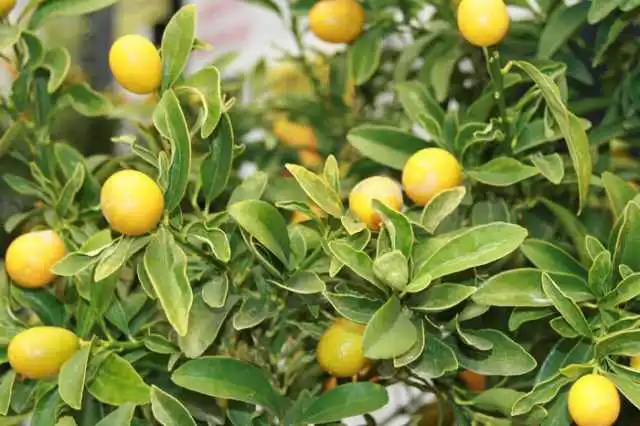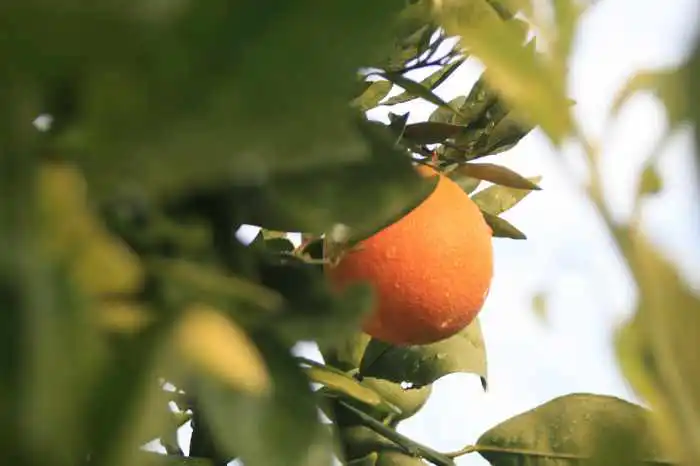Citrus is easy to grow in Phoenix, Arizona. It has been an integral part of Arizona’s history and economy for decades. They can handle the heat and you can successfully grow them in your own backyard.
Ready for some tips and tricks to grow citrus? Let’s start by talking about what kind of citrus you can plant in Phoenix, when to plant citrus, how to plant, when to fertilize, watering requirements, how to care for, and when to harvest fruit.
This post may contain affiliate links. If you purchase after clicking an affiliate link we may receive small commission at no cost to you. As an Amazon Associate I earn from qualifying purchases. Please read our disclosure policies.
Arizona and Citrus
The economical importance of the fruit is highlighted in Arizona’s history. Citrus is one of Arizona’s five Cs (copper, cotton, citrus, cattle and climate). It wasn’t too long ago citrus groves could be seen throughout the city. Interstates, commercial property and suburbs paved over many of the citrus groves.
Citrus trees can handle the Phoenix heat, provides shade, has amazing smelling blossoms (the smell of Spring) and tons of fruit in your backyard.
Citrus that Grows Well in Phoenix
Easy to grow citrus trees in Phoenix include:
- Oranges
- Lemons
- Limes
- Grapefruit
- Kumquat
- Tangerines
- Tangelos
Gardening Steps: Grow Citrus in Phoenix
- When to plant
- How to plant
- How to care for citrus
- Watering Requirements
- Harvesting citrus – when is the ideal time to pick fruit?
When to Plant Citrus in Gardening Zone 9b
The ideal time in Phoenix to plant a citrus tree is March through June. This gives the tree time to establish before it gets too hot. The second best time to plant citrus in Phoenix is in September and October.
How to Plant a Citrus Tree
Where you plant is as important as how you plant for a citrus tree to optimally grow and flourish. Citrus trees, like most plants, thrive with a foundation of good soil and good drainage. Avoid planting citrus in caliche. Plant in a warm area of your yard. They do well with southern exposure.
To plant a citrus tree you’ll want to dig a hole* that is 3 times as wide as the rootball of the tree. The hole depth should be a little shallower than the rootball.
Plant the tree at or above grade. You do not want to cover the bud union of the tree with soil. Doing so can increase the odds of disease such as Phytophthora trunk rot. This can kill your tree.
*Before digging any holes in your backyard you should call Arizona 811 to avoid hitting any underground utilities.
Grow Citrus in Phoenix: Watering Requirements
Citrus trees are not low water plants. They consume a lot of water.
Ideally citrus should be on their own watering line. How often you water will depend on the age of the tree and the season.
The younger the tree the higher the frequency.
Newly planted citrus trees should be watered every few days.
As a general rule, established trees (1 year or older) can be watered every 10-14 days in the winter, every 2 weeks in the spring and every week to 10 days in the summer months.
As with all plants it is best to monitor the health and growth of your tree and adjust watering accordingly.
Another thing to keep in mind is that citrus is sensitive to salt. Water longer rather than more often. Deep watering pushes the salt in the soil away from the tree’s roots.
Leaching the soil once or twice a year is beneficial for citrus. This practice can help counter the effects of salty water. Powdered gypsum can help as well.
As the tree grows emitter lines should be moved to the branch canopy of the tree.
Fertilizing Citrus Trees
If you did all that work of picking the perfect spot for your citrus, planting, and watering it don’t neglect fertilizing. Fertilizing citrus in Phoenix is important and your fruit quality will suffer if you do not fertilize.
Every package of fertilizer should list three numbers. These numbers refer to the percentage of nitrogen, phosphorus and potassium or NPK in the fertilizer.
What to look for when choosing Citrus Fertilizer
Nitrogen is the most important element for citrus tree flowers, fruit, and leaf growth. Citrus is susceptible to nitrogen deficiency. When looking at citrus fertilizers choose one with a higher nitrogen percentage. This will be the first number on the package. A mature citrus tree needs at least a pound of nitrogen a year.
Citrus trees need to be fertilized several times a year in equal applications. We’ve used Arizona’s Best Citrus fertilizer for years. Two other popular citrus fertilizers among local gardeners is Happy Frog Citrus fertilizer or Jack’s Classic Citrus FeED.
What type of fertilization is best?
Citrus does best with granular and slow release fertilizer.
How much fertilization is needed & When Should You Use Fertilizer?
When fertilizing use equal applications at least three times per year. Refer to your fertilizer bag for instructions on how much. The amount will depend on the size of tree.
- Orange, grapefruit and tangerine trees should be fertilized at least three times before July. Fertilize in February, April and June.
- Lemons and limes should be fertilized three times per year as well. They do best if fertilized in February, April and October.
How Fast does Citrus Grow?
Our yard is home to two orange trees a Navel and an Arizona Orange, a Rio Red Grapefruit and a Eureka lemon tree.
The Eureka lemon tree has surpassed all in growth. It is the fastest of the other three trees and produced fruit the first season, quickly flowering again after all the fruit was picked.
Harvesting: When will Fruit Ripen
Most citrus trees will ripen between November and January in Phoenix depending on the variety. Limes will ripen in June. Eureka Lemons produce fruit throughout the year and ripen in January.
Depending on the variety of citrus you can expect to harvest the following months
- Grapefruit and Oranges are ready to harvest from November – April
- Lemons are ready to harvest from November – March
- Tangerines and Tangeleos harvest from December – March
Once your tree is well-established it can become more difficult to reach the ripe fruit. It can be really helpful to have a fruit picker to reach those harder to reach fruits.
EVERSPROUT 12-Foot Fruit Picker Pole
Light weight, sturdy fruit picker pole. Reach fruit up to 20+ feet. Easy to use fruit picker pole for oranges and your other favorite hard to reach fruits.
Tips & Tricks & Things to Keep in Mind
Keep in mind citrus trees do not produce fruit until they are between 2 and 4 years of age.

Rats love citrus too. Avoid planting citrus trees too close to your home. Trim branches back from the home and roof to discourage roof rats. Pick up fruit that falls on the ground.
There are many other fruit trees to choose from here in the low desert. Besides citrus trees you can choose to plant several different apple trees, apricots, plums, peaches, guava, and pomegranate to name a few.



